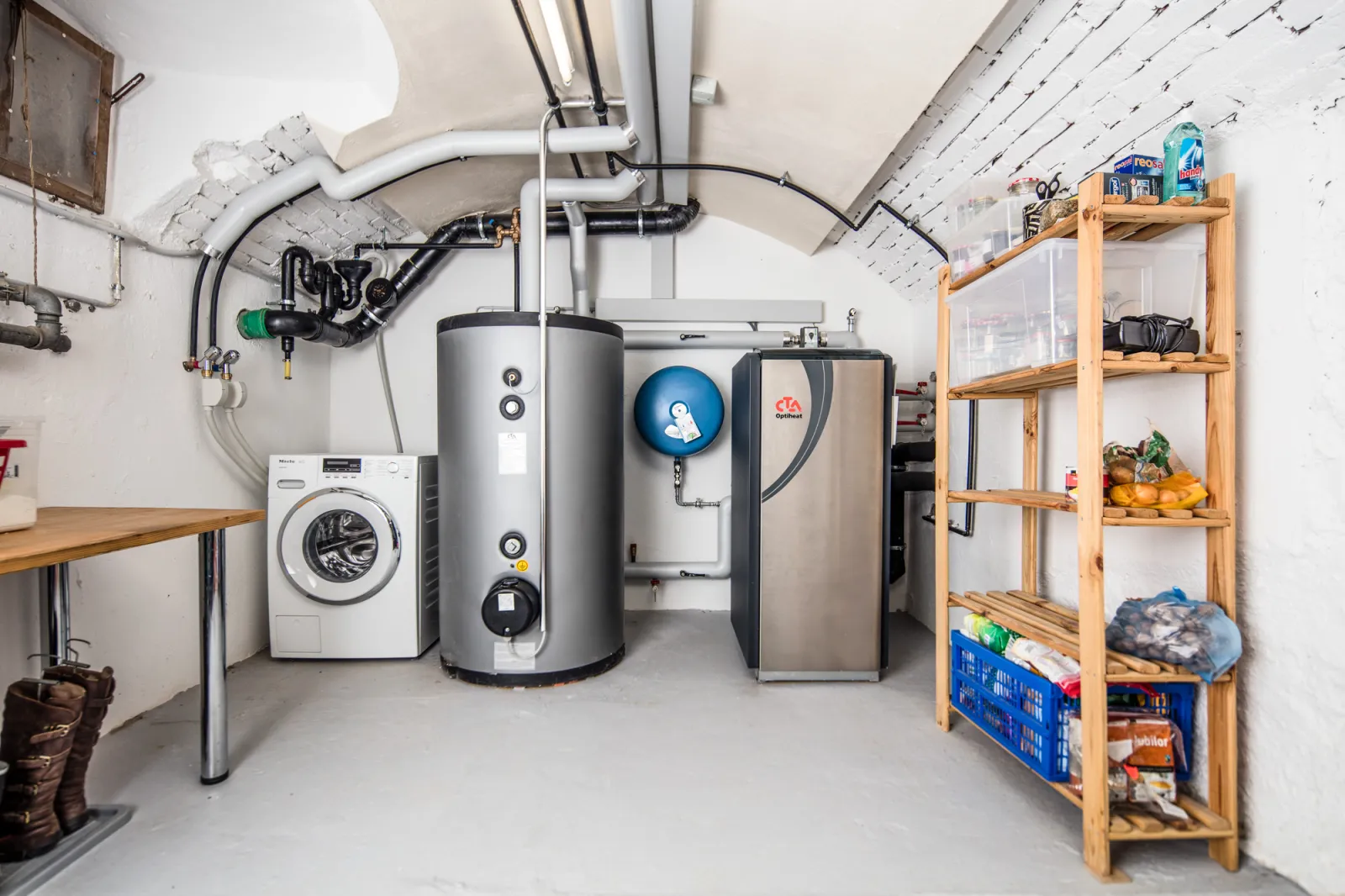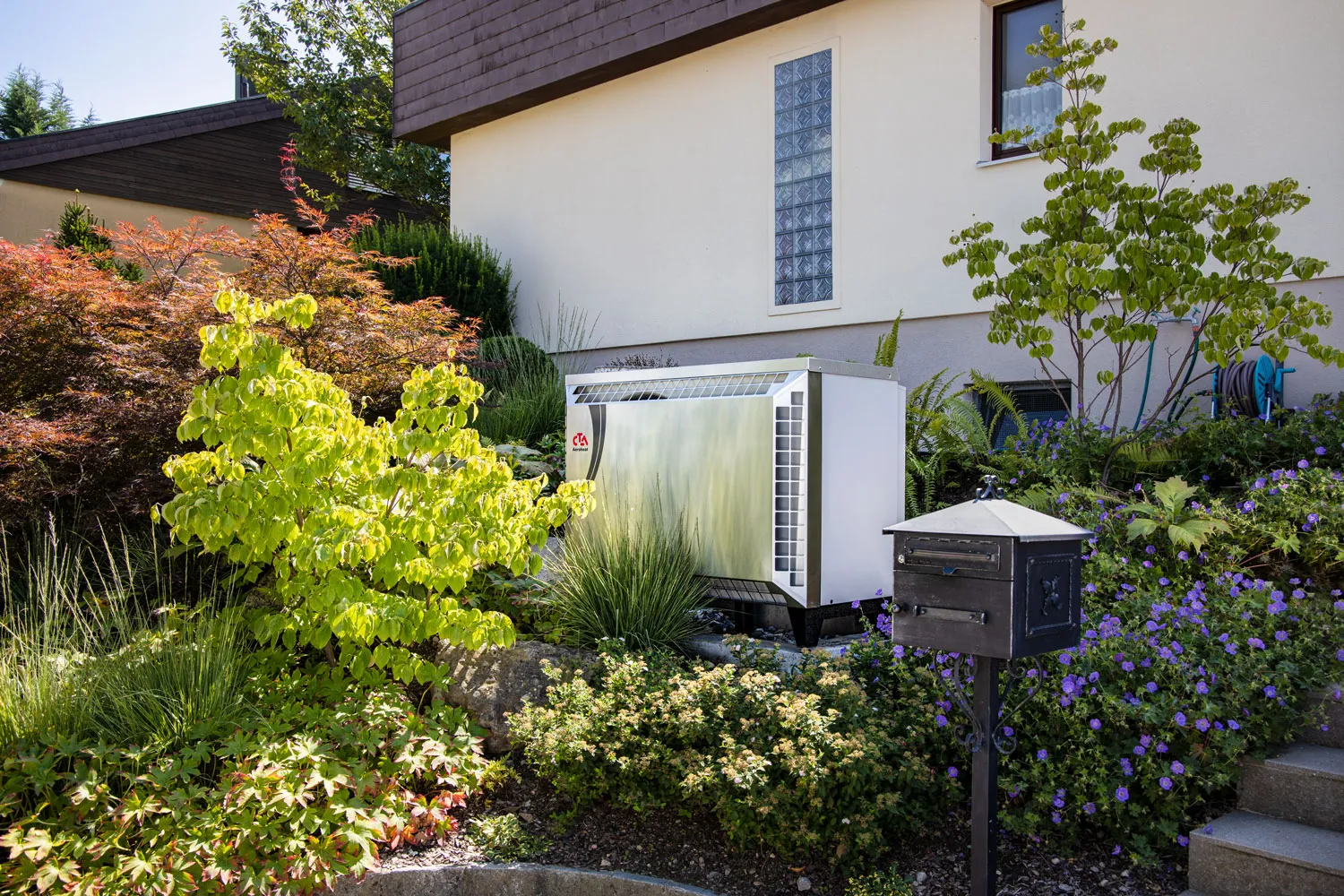Heat pump types
Geothermal heat

80%
geothermal heat
+
20%
electricity
=
100%
heating energy
How it works
Geothermal heat pumps heat in winter and cool in summer using free cooling with energy from the ground. The biggest advantage is that the temperature of the ground is between 7 and 13 degrees Celsius all year round and the heat pump delivers reliable and consistent power.
Installation
For effective and consistent performance, we often drill more than 100 metres into the ground. The geothermal probe is filled with a brine fluid. A pipe is laid from the geothermal probe to the heat pump.
Positioning
Internal heat pumps.
Energy use
The ground source heat pump is the most economical and efficient of the three systems. In the long term, you will not heat as cheaply with any other system.

Facts about geothermal probe heat pumps
a durable, economical heating system
everything compactly installed within the home
high efficiency rate thanks to a constant source temperature
passive cooling (free cooling) possible during the summer
drilling for the geothermal probe is expensive
drilling is not possible everywhere (www.kann-ich-bohren.ch)
Air

70%
energy from the air
+
30%
electricity
=
100%
heating energy
How it works
Air source heat pumps heat during the winter and cool during summer using energy from the air. Ambient air is drawn in by a fan. Depending on the time of year and the weather, this air may be colder or warmer. The heat pump extracts heat from this air and, using 20 to 30% electricity on average, converts it into 100% heating energy.
Installation
Air source heat pumps are installed on building exteriors or interiors. Externally installed units have a pipe that leads to the interior of the house. Internally installed units require two air ducts: one to draw in the air and another to release it back into the environment. Depending on the unit type, these air ducts can be flexibly adjusted to your requirements.
Positioning
Internal or external heat pumps.
Energy use
The energy efficiency of an air source heat pump varies depending on the external ambient air temperature. In the case of a very cold external ambient temperatures, this type of heat pump requires more electrical energy than with moderate external temperatures.

Facts about air source heat pumps
quick and cost-effective installation
internally or externally installed
active cooling possible during the summer
planning permission required for external installations
sufficient basement space required for internal installations with two air ducts
Groundwater

85%
groundwater heat
+
15%
electricity
=
100%
heating energy
How it works
Water source heat pumps create heat using energy from groundwater. The greatest advantage of this is that the temperature of the groundwater is relatively constant throughout the year and the heat pump provides reliable and consistent power.
Installation
At some distance, two wells are drilled down into the groundwater layer. One well is used for water extraction, the other for water return.
Positioning
Internal heat pumps.
Energy use
The water source heat pump provides an increased thermal output. The high installation costs are worthwhile for larger outputs, as a lot of energy can be saved here.

Facts about ground water source heat pumps
highly economical heating system
high efficiency rate thanks to a constant source temperature
everything compactly installed within the home
passive cooling (free cooling) possible during the summer
digging of the extraction and return wells is expensive
permit for use of a water body is required
only possible in certain areas of Switzerland